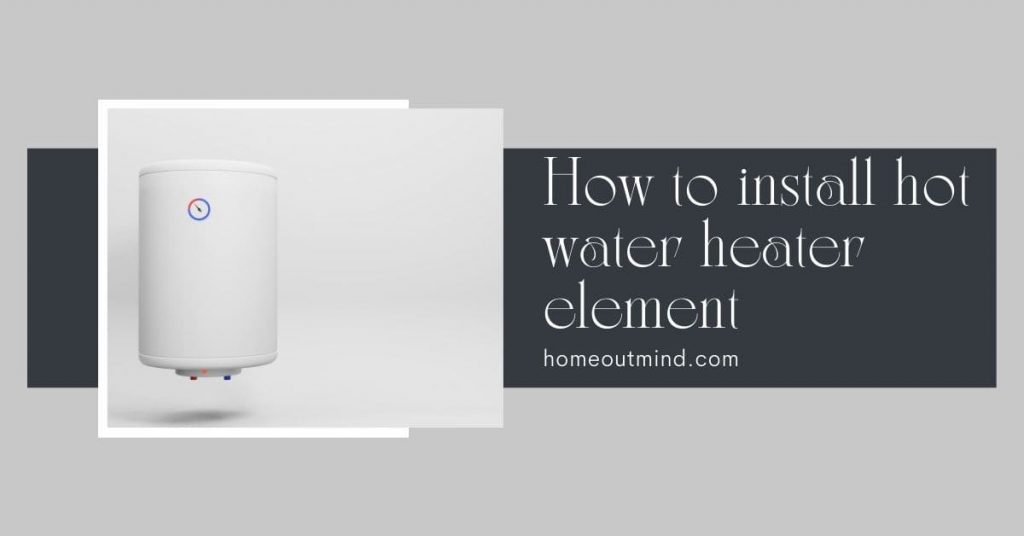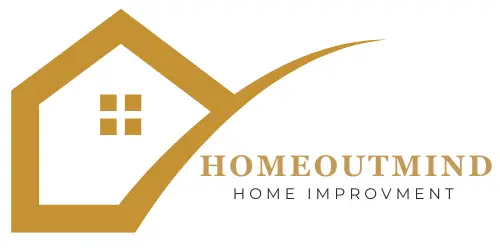Installing a hot water heater element is a crucial aspect of maintaining your water heating system. In this guide, we’ll provide you with step-by-step instructions to ensure a successful installation process.
As experts in plumbing, we understand the importance of proper installation for optimal performance and safety. Let’s begin the journey to a well-functioning water heater.

How to Install a Hot Water Heater Element: Step by Step
Step 1. Preparation
Gather all necessary tools and equipment before starting the installation process. You’ll likely need a wrench, screwdriver, pipe joint compound, and, if replacing the element, a new heating element.
Step 2. Shut Off Power
Begin by prioritizing safety. Switch off the power supply to the water heater by flipping the corresponding switch at the circuit breaker or fuse box. This step is crucial to prevent any electrical accidents while working on the heater.
Step 3. Turn Off Water Supply
Locate the cold water inlet valve connected to the water heater and shut it off. This action prevents water from entering the tank during the installation process.
Step 4. Drain Water Heater
Attach a hose to the drain valve located at the bottom of the water heater. Direct the other end of the hose to a suitable drainage area and open the valve to drain the tank completely. This ensures there is no water present in the tank during the installation.
Step 5. Remove Access Panel
Use a screwdriver to remove the access panel covering the heating element. Typically, this panel is situated on the side of the water heater. Set aside the screws and panel for reassembly later.
Step 6. Disconnect Wiring
Carefully detach the wiring connected to the existing heating element. Take note of the wire connections or take a picture for reference when reconnecting the wires to the new element.
Step 7. Remove Old Element
Using an appropriate wrench, loosen and unscrew the old heating element from its position inside the water heater tank. Exercise caution as there may be residual water present within the tank.
Step 8. Prepare New Element
Before installing the new heating element, apply pipe joint compound or Teflon tape to the threads. This step is crucial for creating a secure and watertight seal when the element is installed.
Step 9. Install New Element
Insert the new heating element into the designated opening within the water heater tank. Ensure the element is positioned correctly and then tighten it securely using a wrench.
To prevent damage to the threads, refrain from tightening excessively.
Step 10. Reconnect Wiring
Attach the wiring to the terminals on the new heating element. Refer to the notes or picture taken earlier to ensure the correct connections. Double-check that all connections are secure to prevent electrical issues later.
Step 11. Replace Access Panel
Once the new heating element is installed and wired correctly, reattach the access panel to the water heater using the screws removed earlier. Ensure the panel is securely in place.
Step 12. Turn On Water Supply
With the installation complete, turn the cold water inlet valve back on to allow water to refill the tank. Keep an eye out for any leaks around the heating element area and tighten connections if necessary.
Step 13. Turn On Power
Finally, restore power to the water heater by flipping the circuit breaker or fuse switch back on. Monitor the water heater to ensure it functions correctly and that the new heating element operates as expected.
Following these detailed steps ensures a thorough and successful installation of a hot water heater element, maintaining the efficiency and functionality of your water heating system.
How to install a water heater expansion tank?
Before initiating the plumbing connections, follow these steps to ensure a seamless installation:
Step 1: Locate Cold Water Inlet and Hot Water Outlet
Identify the COLD water inlet and HOT water outlet, both featuring 3/4” N.P.T. male threads. Ensure the dip-tube is correctly installed in the cold water inlet.
Step 2: Install Shut-off Valve
Install a shut-off valve near the water heater in the cold water line. Additionally, consider incorporating unions in both cold and hot water lines to facilitate easy disconnection for servicing purposes.
Step 3: Assemble Piping with Care
When assembling the hot and cold piping, use Teflon™ food-grade pipe joint compound and ensure all fittings are securely tightened. Avoid using open flames near inlet and outlet fittings to prevent damage to plastic-lined fittings.
Warnings:
- DO NOT plug the temperature and pressure-relief valve or its discharge line.
- DO NOT remove the relief valve. Ensure it’s properly sized for the water heater. Continuous water discharge from the relief valve warrants attention from a qualified service technician to rectify potential issues. Neglecting these instructions can lead to property damage, personal injury, or worse.
Step 4: Verify Relief Valve Specifications
The relief valve must have a maximum set pressure that doesn’t exceed the hydrostatic working pressure of the water heater (150 psi = 1,035 kPa) and a BTU/h rating equal to or greater than the input rating indicated on the water heater rating plate.
- Never plug or remove the relief valve from its designated opening on the water heater.
- When replacement is necessary, use only a new temperature and pressure relief valve that complies with local codes and meets specified requirements.
Step 5: Install Discharge Line
Install a discharge line into the relief valve, ensuring:
- It’s not smaller than the outlet pipe size of the relief valve.
- It terminates between six (6) to twelve (12) inches above a floor drain.
- There are no restrictions or caps at the end of the outlet.
- It’s made of a material capable of withstanding 210˚F (99˚C) without distortion.
- It allows complete drainage of the relief valve and discharge line.
- It terminates over an adequate free-flowing drain.
Step 6: Address Pressure Build-up
During operation, the heated water expands, resulting in pressure build-up. Installing a temperature and pressure-relief valve helps mitigate this.
If pressure build-up occurs due to components like water meters or pressure reducing valves, install an expansion tank to prevent damage and maintain warranty validity.
Step 7: Fill the Water Heater
To ensure the proper functioning of your water heater, follow these steps to fill it with water:
Close Drain Valve: Insert a flat-head screwdriver into the slot on the head of the drain valve and turn the knob clockwise to ensure it’s closed securely.
Open Cold Water Supply Valve: Open the manual shut-off valve for the cold water supply. This valve should remain open whenever the water heater is in use. Never operate the water heater with the cold water supply valve closed.
Purge Air from System: Open all hot water faucets in your house to release air trapped in the water heater and plumbing system. Keep the faucets open until a steady flow of water is achieved.
Check for Leaks: Once water is flowing steadily from the faucets, inspect all plumbing connections to ensure there are no leaks.
Step 8: Electrical Connections
When connecting your water heater to an electrical supply, follow these steps:
Ensure Proper Wiring: The water heater must be connected to a separate fuse branch circuit. Verify that the power supply wiring and circuit breaker or fusing are the correct sizes for the water heater’s wattage and voltage, as indicated on the rating plate.
Check Wire Connections: Ensure all wire connections on the element and thermostat are correctly installed, secure, and free from grounding, splitting, or damage.
Use Approved Wiring: If replacing any wiring, use only 14AWG-type or greater wire approved for temperatures of up to 221˚F (105˚C).
Connect to Power Supply: Connect the power supply wiring to the red and black wires attached to the top thermostat.
Water Temperature Regulation
To adjust the water heater’s temperature, follow these steps:
Turn Off Power: Switch off the power to the water heater.
Access Thermostat: Remove the element and thermostat access door and insulation. On U.S. models, do not remove the thermostat protective cover.
Adjust Thermostat Setting: Using a small flat-head screwdriver, turn the thermostat dial to the desired temperature.
Restore Insulation: Replace the insulation and access door before switching the power back on.
Condensation
Condensation may form on the water heater’s surface under certain conditions:
1. When initially filling the water heater with cold water.
2. If the water heater is undersized.
3. When large amounts of hot water are drawn in a short period, and refill water is very cold.
Ensure a drain pan is installed under the water heater to manage condensation.
Insulation Blankets
External insulation blankets for electric water heaters are unnecessary as this water heater meets or exceeds NRCAN standards for insulation and standby loss requirements. However, if local codes mandate their use, take care not to cover important labels, access doors, or the temperature and pressure-relief valve.
Inspect the insulation blanket regularly to ensure it doesn’t interfere with the water heater’s operation.
Where to Install the Water Heater Element
Once you’ve acquired the appropriate water heater expansion tank, the question arises: where should you install the water heater element? Here are some crucial considerations regarding the location:
1. Proximity to Power Supply and Main Water Use:
It’s essential to position the water heater as close as possible to both a power supply and the primary point of hot water usage. This ensures efficient operation and minimizes energy loss during distribution.
2. Accessibility for Maintenance:
The water heater should be strategically positioned to allow easy access to the element and thermostat access doors. This facilitates hassle-free inspection, adjustment, and servicing of these components whenever necessary.
3. Accessible Drain Valve:
Ensure that the drain valve remains easily accessible for maintenance purposes. This allows for efficient drainage and prevents potential issues associated with clogging or blockages.
4. Placement near Floor Drain or Drain Pan:
Ideally, position the water heater expansion tank near a suitable free-flowing floor drain. In cases where a floor drain isn’t adjacent to the water heater, installing a drain pan underneath is imperative.
The drain pan should be at least four inches larger than the diameter of the water heater and at least one inch deep, providing access to the drain valve.
Proper piping of the drain pan to an appropriate drain is essential to prevent property damage in case of leaks from the piping, relief valve, or the water heater.
5. Protection on Carpeting:
If the water heater is installed on carpeting, it’s crucial to protect the carpeting by placing a wooden or metallic panel beneath the water heater.
This panel should extend at least three inches beyond the width and depth of the water heater tank to ensure adequate coverage and safeguard against potential damage.
What to Do if You Smell Smoke?
If you detect smoke emanating from your water heater, follow these immediate steps:
- Turn Off Power: Immediately switch the power to the water heater to the “OFF” position.
- Contact Fire Department: If smoke persists even after powering off the water heater, contact your local fire department for assistance.
- Seek Professional Help: Once the smoke has ceased, enlist the services of a qualified service technician to diagnose and rectify the underlying issue.
Bonus Tips:
- Do Not Remove Access Door: Avoid removing the element and thermostat access door until the power to the water heater has been switched off.
- Do Not Attempt DIY Repairs: Refrain from attempting to repair or replace any electrical components on the water heater without first disconnecting the power supply.
- Use Correct Voltage: Only use the specified voltage indicated on the water heater rating plate to avoid electrical hazards.
- Connect Power Supply Correctly: Ensure that the power supply wiring is connected only to the main power connection on the water heater.
- Fill Water Heater Before Powering On: Do not switch on the power to the water heater unless it has been filled with water to prevent damage.
- Do Not Drain with Power On: Avoid draining the water heater while the power is still connected to prevent electrical accidents.
- Store Flammable Materials Safely: Refrain from storing or using gasoline or other flammable vapors and liquids near the water heater or any other appliances to mitigate fire risks.
Frequently asked questions:
How to replace a thermocouple on a water heater?
When replacing a thermocouple on a water heater, it’s essential to start by turning off the gas supply and pilot light for safety. Next, locate the thermocouple attached to the control valve and carefully disconnect it.
Take note of its position to ensure proper installation of the new thermocouple. Install the new thermocouple by threading it into place and reconnecting it securely to the control valve.
Finally, relight the pilot light and test for proper operation to ensure the water heater functions efficiently. For a detailed guide, explore our comprehensive post on Replacing a Thermocouple on a Water Heater.
How to test a water heater element?
Testing a water heater element involves a few steps to ensure accurate results. Begin by turning off the power to the water heater and draining the tank partially. Then, disconnect the wires from the heating element and use a multimeter to measure the resistance across the terminals.
Compare the reading to the manufacturer’s specifications to determine if the element is functioning correctly. If the resistance reading deviates significantly from the expected value, consider replacing the element to restore optimal performance to your water heater.
Explore our detailed guide on Testing a Water Heater Element for step-by-step instructions.
How to turn up a hot water heater electric?
Adjusting the temperature on an electric hot water heater is a straightforward process. Start by locating the thermostat panel on the heater and removing the cover.
Use a screwdriver to adjust the temperature dial to your desired setting. Keep in mind that higher temperatures can increase energy consumption and the risk of scalding, so set the temperature responsibly.
Replace the thermostat cover and monitor the water temperature to ensure it meets your needs. For more insights, check out our detailed post on Turning Up a Hot Water Heater Electric.
How to vent a tankless water heater?
Proper venting of a tankless water heater is crucial to ensure safe and efficient operation. Begin by consulting the manufacturer’s guidelines to determine the appropriate venting requirements for your specific model.
Select the correct type and size of vent pipe according to local building codes and regulations. Install the vent pipe securely, ensuring proper alignment and sealing to prevent leaks and maintain proper airflow.
Consider hiring a professional if you’re unsure about the venting process to ensure the safety and effectiveness of your tankless water heater. Check out our comprehensive guide on Venting a Tankless Water Heater for detailed instructions.
Why is the water heater leaking?
Water heater leaks can stem from various sources, including loose fittings, corroded pipes, or a faulty pressure relief valve. Start by inspecting the water heater for visible signs of leakage, such as puddles or dampness around the unit.
Check the pressure relief valve for signs of corrosion or malfunction and replace it if necessary. Additionally, tighten any loose fittings and inspect the pipes for signs of corrosion or damage.
If you’re unable to identify the source of the leak or if it persists after addressing potential causes, consider consulting a professional plumber for further assistance. Learn more about Water Heater Leaks in our informative guide.
Conclusion
In conclusion, mastering how to install a hot water heater element ensures your system runs smoothly, providing comfort and convenience.
With these steps, you’re equipped to tackle the task efficiently, ensuring a seamless and effective installation. Say goodbye to chilly showers and hello to uninterrupted warmth. Cheers to a job well done and endless hot water ahead!



